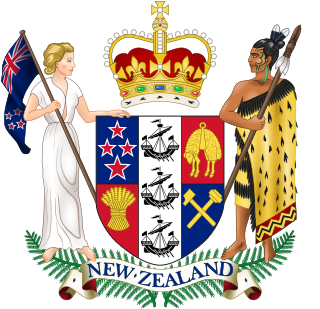 W
WThe Clean Air Act was an Act of Parliament passed in New Zealand in 1972. It was repealed by the Resource Management Act 1991.
 W
WThe Climate Change Response Act 2002 is an Act of Parliament passed by the government of New Zealand.
 W
WThe Continental Shelf Act 1964 is an Act of Parliament in New Zealand regulating the use of the continental shelf. It is administered by the Ministry of Foreign Affairs and Trade. Except for two sections the Act it is in force in the Cook Islands, a country in free association with New Zealand.
 W
WThe Environment Act 1986 established the Ministry for the Environment and the Office of the Parliamentary Commissioner for the Environment.
 W
WThe Environment Court of New Zealand is a specialist court for plans, resource consents and environmental issues. It mainly deals with issues arising under the Resource Management Act, meaning that it covers a wide range of potential future effects of planning applications, which can include such areas as traffic congestion, noise/pollution emissions and social and commercial consequences, rather than just the 'ecological' aspects that could be implied by the 'environmental' term.
 W
WEnvironmental Defence Society v New Zealand King Salmon was a case in the Supreme Court of New Zealand concerning the proper interpretation of the Resource Management Act 1991 by planning bodies.
 W
WThe Hazardous Substances and New Organisms Act (HSNO) is an Act of Parliament passed in New Zealand in 1996. The New Zealand Environmental Protection Authority (EPA) administers the Act.
 W
WThe Litter Act 1979 is an Act of Parliament in New Zealand. This Act is administered by the Department of Internal Affairs.
 W
WThe Marine Mammals Protection Act 1978 is an Act of Parliament passed in New Zealand in 1978. It is administered by the Department of Conservation.
 W
WThe Marine Reserves Act is an Act of Parliament in New Zealand.
 W
WIn 1987, the Fourth Labour Government passed the New Zealand Nuclear Free Zone, Disarmament and Arms Control Act. The Act essentially declared New Zealand as a nuclear free zone. The purpose of the Act was ambitious and wide-ranging: “to establish in New Zealand a Nuclear Free Zone, to promote and encourage an active and effective contribution by New Zealand to the essential process of disarmament and international arms control”.
 W
WNorth Shore City Council v Auckland Regional Council was a case in the Environment Court of New Zealand concerning the proper interpretation of section five of the Resource Management Act 1991 by planning bodies.
 W
WThe Reserves Act 1977 is an Act of Parliament passed in New Zealand. It is administered by the Department of Conservation
 W
WThe Resource Management Act (RMA) passed in 1991 in New Zealand is a significant, and at times, controversial Act of Parliament. The RMA promotes the sustainable management of natural and physical resources such as land, air and water. New Zealand's Ministry for the Environment describes the RMA as New Zealand's principal legislation for environmental management.
 W
WThe Rotorua City Geothermal Energy Empowering Act 1967 is an Act to enable the Rotorua City Council to make provisions for the control of the tapping and use of geothermal energy in the city of Rotorua.
 W
WThe Scenery Preservation Act was an Act of Parliament passed in 1903 in New Zealand.
 W
WTeitiota v Chief Executive Ministry of Business, Innovation and Employment concerned an application by a Kiribati man, Ioane Teitiota, for leave to appeal against a decision of New Zealand's Immigration and Protection Tribunal that declined to grant him refugee and/or protected person status. Teitiota's case became a cause célèbre for environmentalists and human rights activists as it made its way towards the Supreme Court. Teitiota was declined application for leave to appeal to the Supreme Court in July 2015. In September 2015 Teitiota was placed in police custody and deported back to Kiribati.
 W
WThe Waste Minimisation Act is an Act of Parliament passed in New Zealand in 2008.